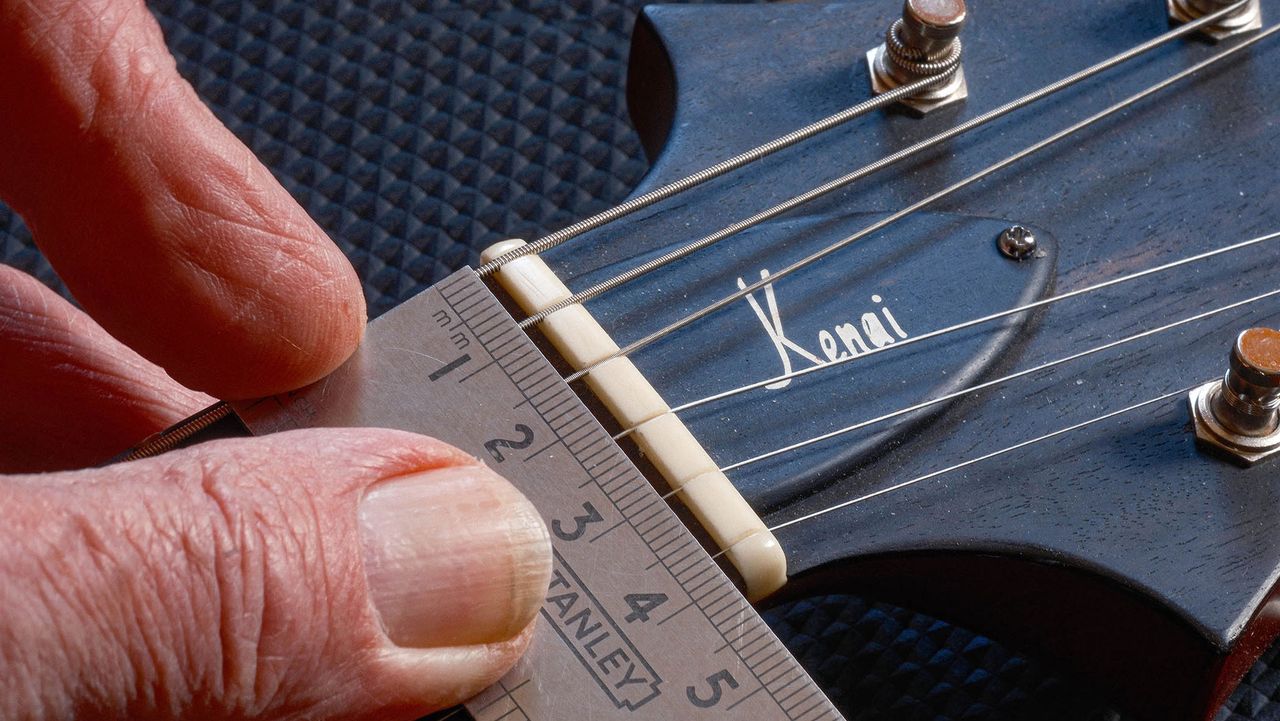
Time to put your soldering iron down and consider a few often overlooked facts and figures about the guitars we play. Dave Burrluck answers some questions, the first addressing one of the most fundamental aspects of your instrument – string spacing.
Q. I’ve struggled with certain guitars over the years because the necks feel too small and I’ve got big fingers. I play electric exclusively and wondered if The Mod Squad could give me any tips. Are there certain guitars with wider necks?
Chris Morrison, via email
Hi Chris, I’m sure you’re not the only player, young or old, who’s struggled with a neck that feels too thin, small or wide, too big or fat. But using the broad range of electric instruments we get in for review, there’s perhaps not as much difference as you might imagine.
The thing I find interesting is that very few people talk about string spacing because, fairly obviously, irrespective of the width of the neck of two different guitars, if the string spacing is the same there won’t be any more or less room for your sausage/needle fingers.
Historically, Gibson used a wider neck when measured at the nut compared with Fender, and the perception is that it’s still true today. But is it? And while plenty of people will quote you their preferred nut width, do they know what the actual string spacing is? To clarify, the string spacing is measured between the centres of the two outer strings [pic 1, below].

I spec out every review guitar that falls on my watch to review, as well as occasionally more historic pieces we might be featuring. And from a selection of over 300 instruments I’ve measured over the past seven years, things are not quite what they seem.
Regardless of the style or brand, the average string spacing from that considerable number is between 35mm, 35.5mm and 36mm, which means, theoretically, that there’s a maximum of 0.2mm difference in width between each string pair, the equivalent to a 0.008-inch top E string. Typically, the smaller spacing will be on a neck with a thinner quoted nut width and vice versa, but that’s not always the case, either.
Typically, the smaller spacing will be on a neck with a thinner quoted nut width and vice versa, but that’s not always the case, either
Of course, this uniformity is created by the fact that the majority of larger makers will use a standard-sized nut with pre-cut or notched grooves, so their string spacing won’t change.
However, the way in which the actual neck is final-sanded and then finished can create more discrepancies – an acceptable tolerance that might mean a 43mm nut width on the specification sheet could be almost 0.5mm wider or narrower, sometimes more.
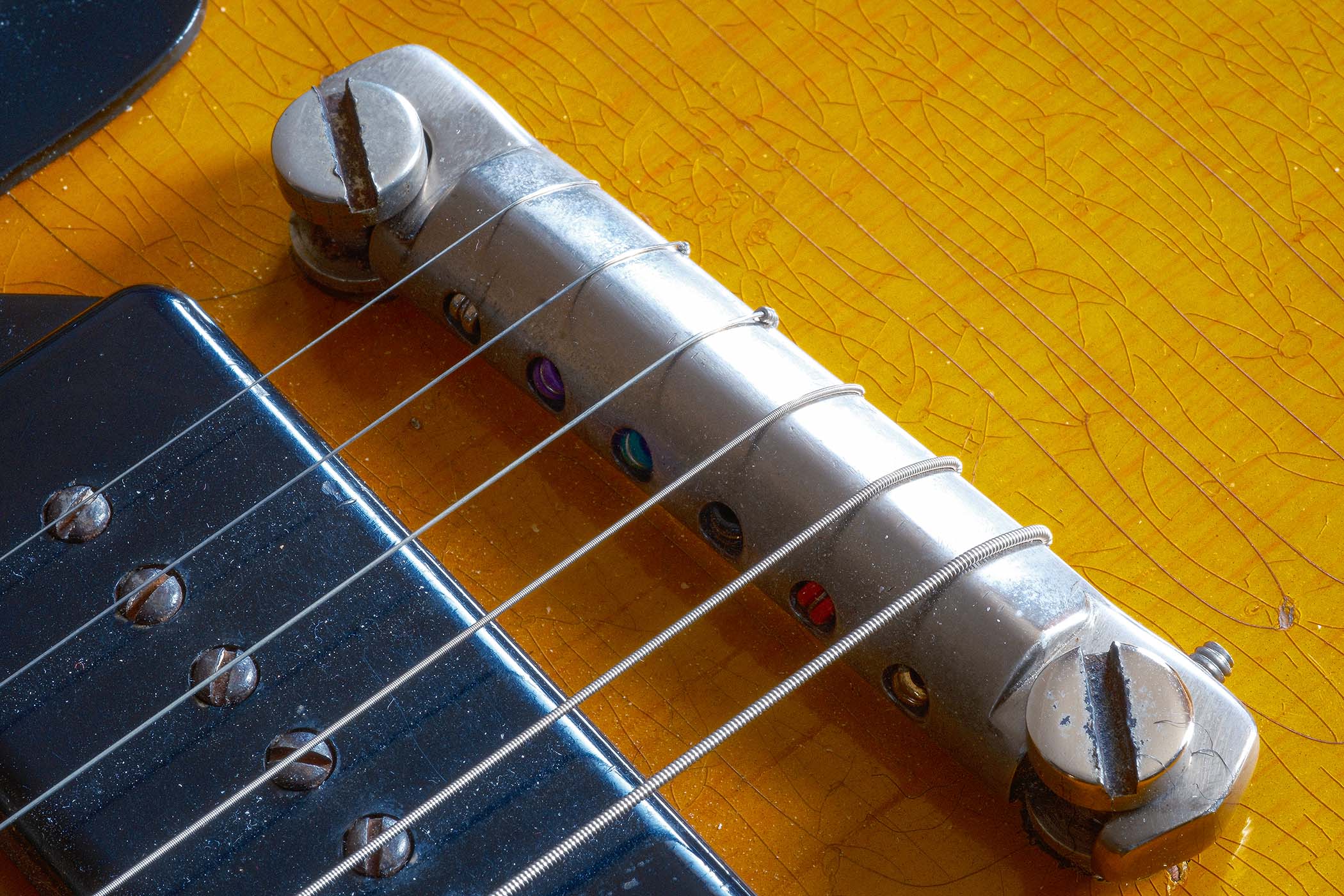
Back to the original perception that Gibson is wider than Fender, and at the other end – the bridge – it’s actually the opposite. Historically, Fender used a wider string spacing at the bridge of approximately 55mm, and Gibson used a narrower spacing closer to 50mm.
So, again theoretically, on that Fender your left hand might be a little cramped, while there’s more room for your pick or fingers at the bridge; the Gibson is the opposite [pic 2 above].
In the more modern world, plenty of makers use a halfway bridge-spacing standard of 52.5mm, such as PRS, for example [pic 3, below].
The reality is that when people say they prefer a ‘big’ or ‘small’ or even ‘wide’ or ‘narrow’ neck, that preference can have little or nothing to do with actual string spacing.
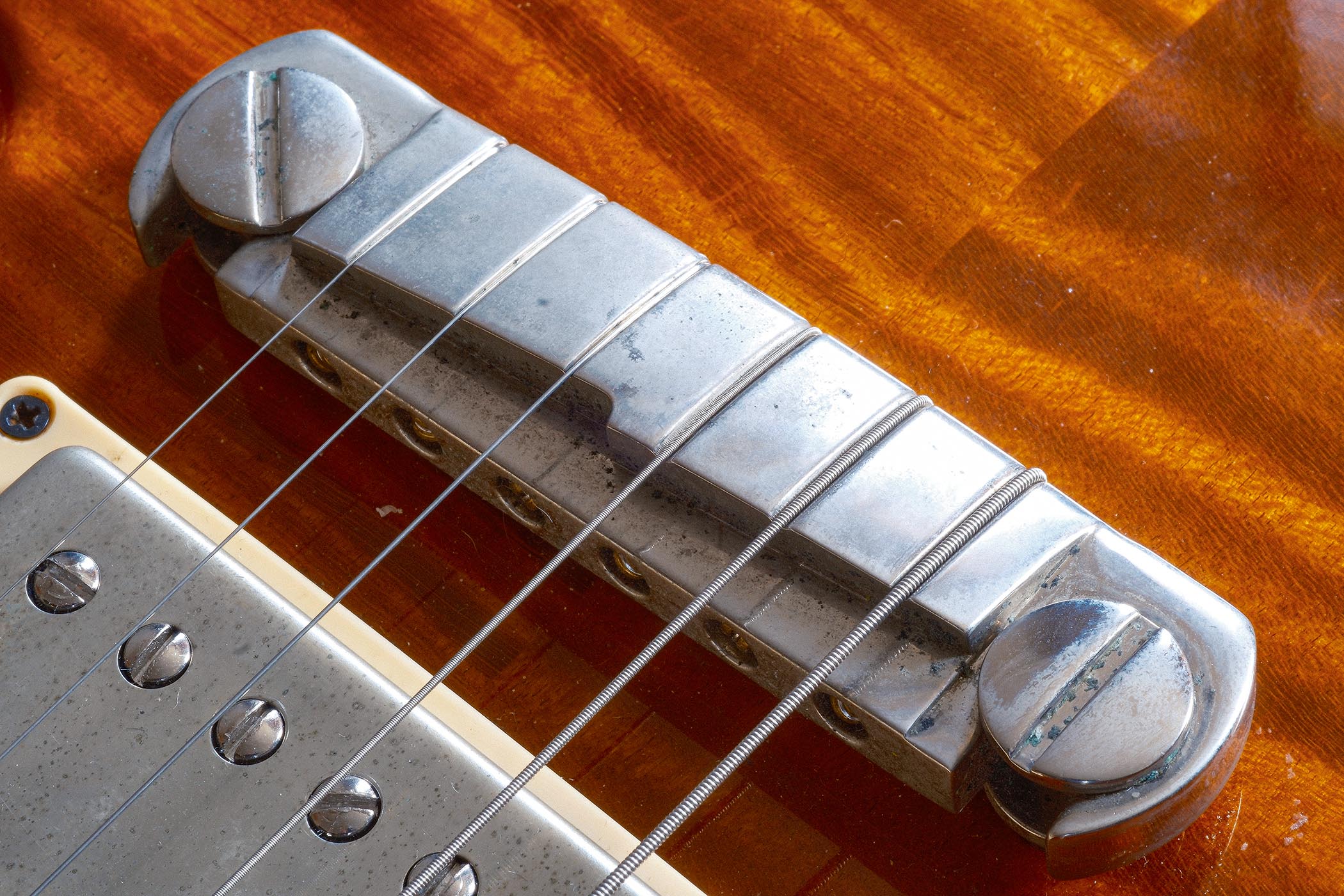
Shape Shifting
But does any of this really matter? Yes and no. Any of us can put our hand around a neck, play it a bit and conclude, ‘Oh, it’s a bit big for me,’ or ‘This feels too small,’ when, dimensionally, they might be exactly the same: in width, measured at the nut and at the 12th fret; and in depth, typically measured at the 1st and 12th fret. But how so?
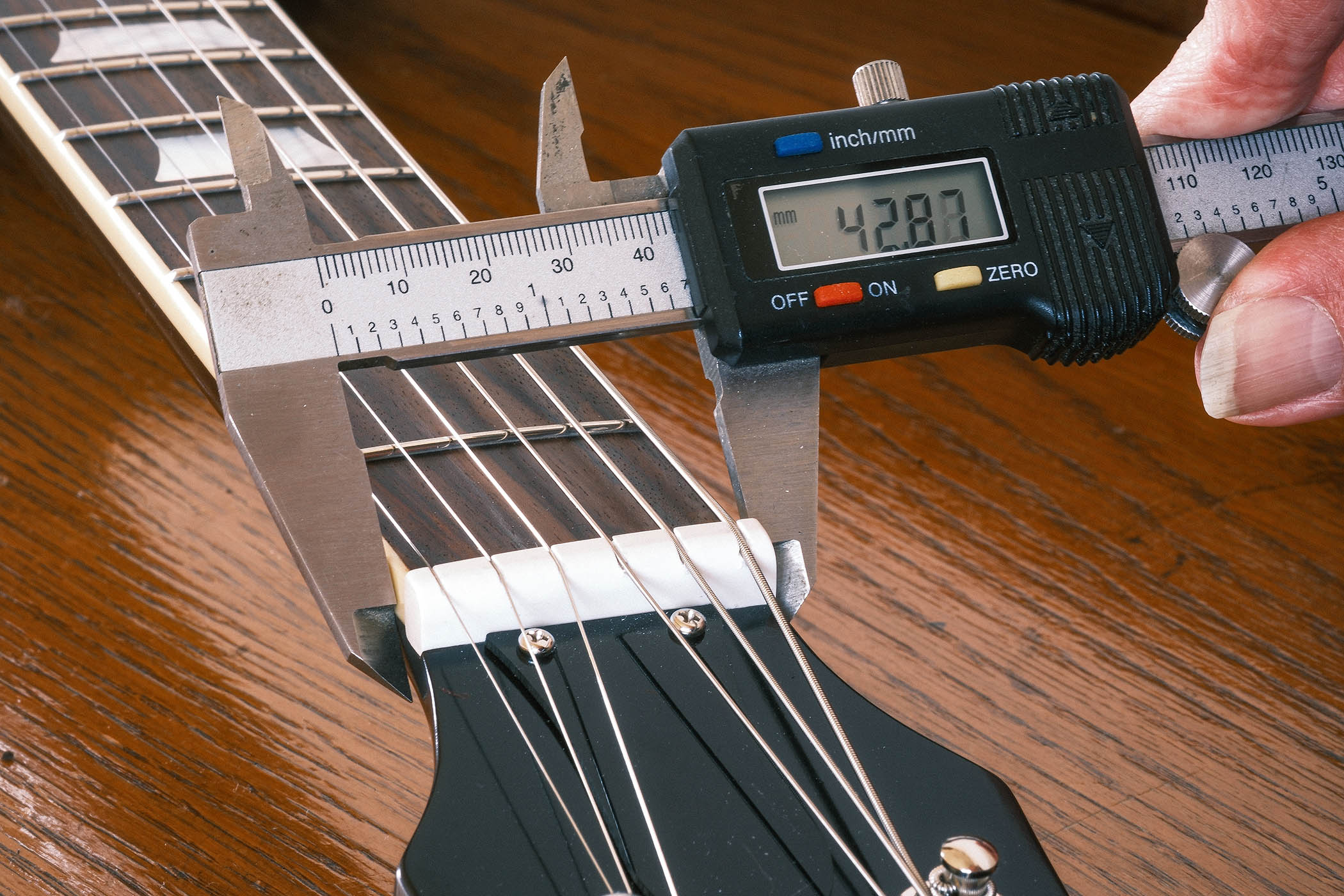
Well, the neck shape is crucial, too. Imagine a nice full C profile compared with the same width and depth but with a slightly V’d profile and, I’ll wager, your hand will tell you the latter neck feels smaller because there is less shoulder to the shape – it’s less full feeling, even if it’s a very subtle difference.
Likewise, an asymmetric profile can throw another curveball. A neck might be fuller on the bass side and have less shoulder on the treble side, which can make it feel pleasantly big, not least if you wrap your thumb around the neck, whereas the treble side feels ‘smaller’. Sometimes it’s the other way around.
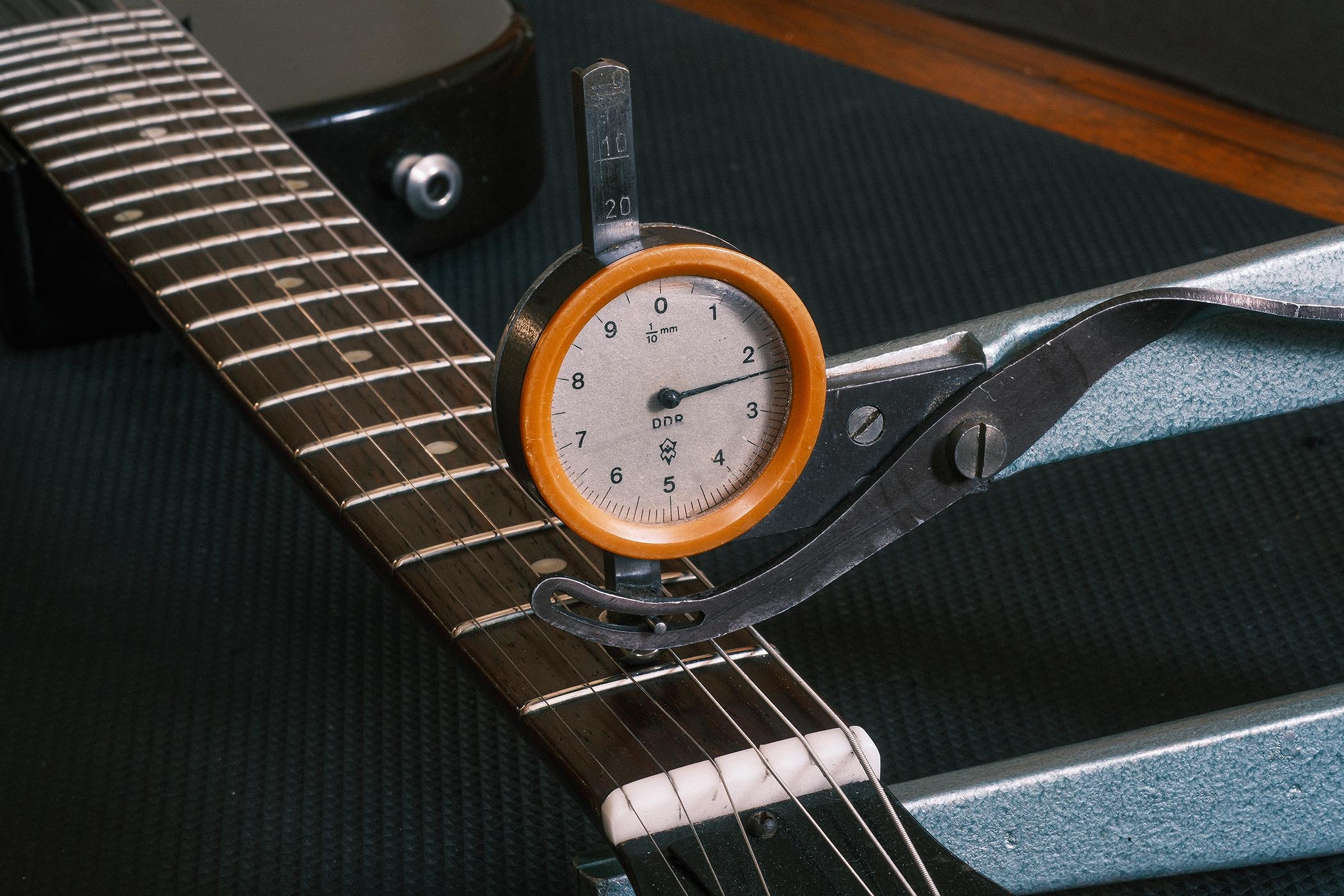
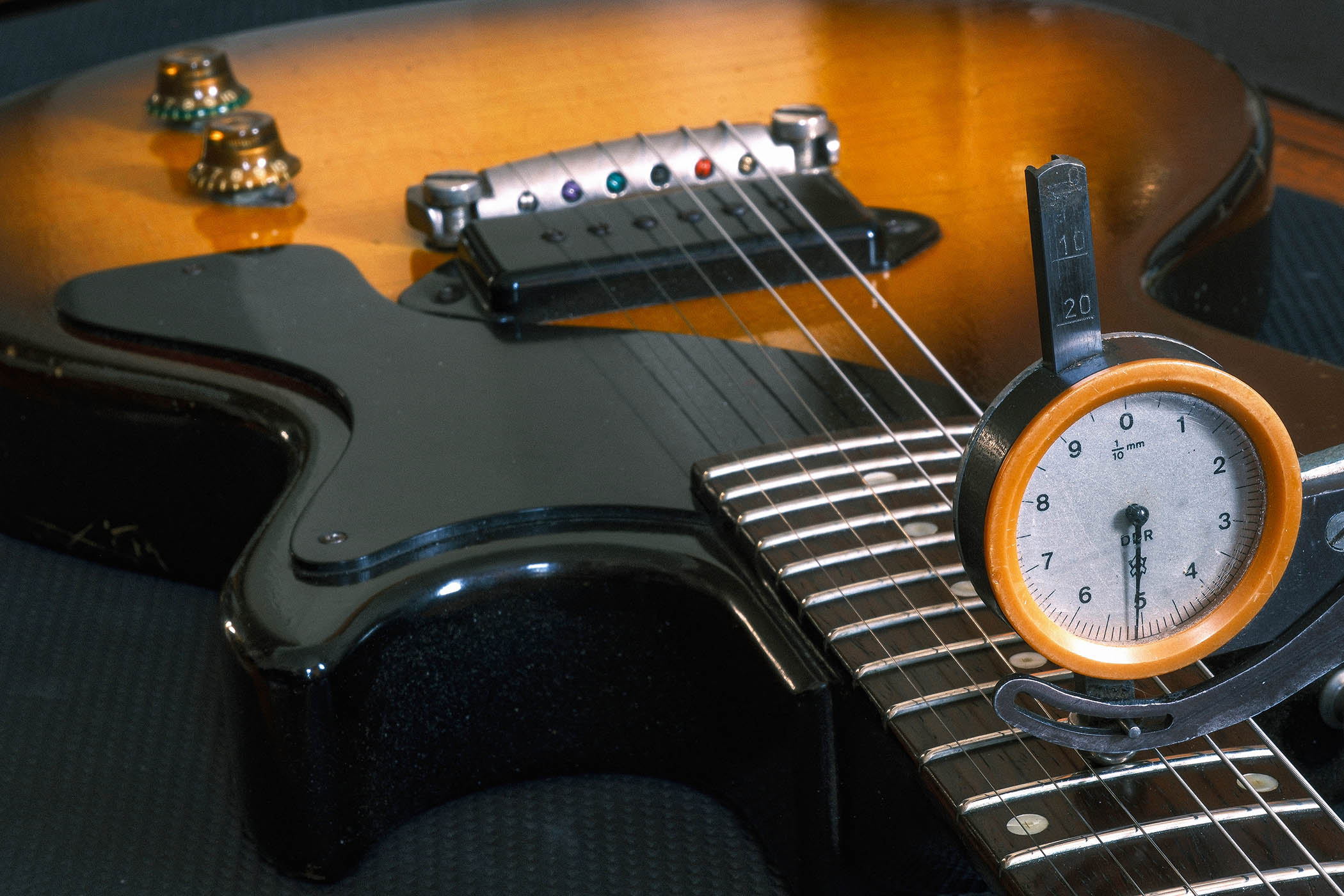
Moving outside of the mainstream electric world, often jazz-aimed instruments do have slightly wider string spacing. For example, Eastman’s Romeo and Romeo LA, certainly inspired by the jazz guitar, both use 37.5mm string spacing with nut widths of 44mm and 44.5mm respectively, pretty much the widest I’ve encountered.
One major exception to that, however, was Gibson in 2015 who thought that it was a good idea to offer potentially sausage-finger-friendly wider necks on many of its models.
But despite a width at the nut (actually, it was a brass zero fret) of approximately 45.5mm, these guitars retained their standard string spacing of 36.5mm at the nut and 50mm at the bridge. The reason escapes us.
- This article first appeared in Guitarist. Subscribe and save.







